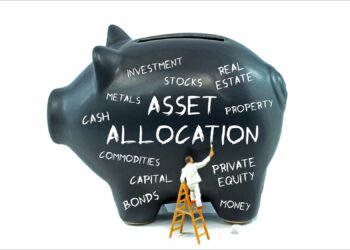Value is dead. It’s a phrase anyone following the financial press would have heard regularly in recent times.
It’s certainly not the first market environment in which value has been killed off by a swathe of commentators and it won’t be last.
It comes as no surprise that value-style investors are challenged during this period of record-breaking market extremes. This year alone the S&P 500 has had 22 record closes and the tech-heavy NASDAQ has had 45 record closes. This is during a period in which the index has never been so top-heavy, with a handful of mega-cap tech stocks leading the market.
Chart 1 illustrates market leadership over the last 30 years, recently breaching the extremes of the dot-com bubble. US market cap concentration (yellow) is now very high and market breadth (the measure of stocks outperforming the index) is very low. Currently just 30% of stocks in the S&P 500 are outperforming.
In light blue, you can see the rolling performance of traditional value stocks relative to the market. This provides an insight into how lower multiple stocks have performed on a sector-neutral basis. We currently see this metric also at historical extremes – in negative territory on a three-year rolling return basis.
As the market has herded into a very narrow selection of stocks, multiple dispersion has likewise reached extraordinary levels. Investors are prepared to pay substantially more for stocks they like (perceived winners) relative to stocks they don’t like (perceived losers) across every sector.
EVEN GREAT BUSINESSES CAN DE-RATE
Many may argue these nose-bleed valuations of businesses at the top of the market will stand the test of time, because they’re applied to great stocks; new age businesses, disruptors and the leaders of seismic structural change.
We don’t disagree that disruption is real and many at the forefront of change will be great businesses, but this does not automatically make them great investments at today’s elevated valuations. It would be foolish to ignore the fact that as the dot-com bubble burst even great businesses such as Microsoft and Cisco de-rated.
In 1999, Microsoft was trading at a peak multiple of around 85 times earnings. It was then, and still remains, a great business but 85 times earnings was not the right price to pay. By 2011 the market de-rated this great business to an earnings multiple of less than 10 times. Throughout this period, Microsoft’s earnings continued to grow but its share price fell and underperformed the index because the market de-rated the stock.
Those who invested in Microsoft at those excessive multiples would not have broken-even on their investment until 2014.
THE EMERGENCE OF A MARKET ROTATION?
Recent share market volatility during September is a reminder of the risky game being played by investors who continue to pour capital into growth and momentum alone.
We know the market extremes outlined above have previously signalled major turning points, where the less popular, lower multiple stocks begin outperforming the popular market leaders trading on extended valuations.
A rotation, or compression in extreme multiple dispersion, can occur with a cyclical rebound in economic activity or a change in investment preferences, much like that experienced following the ‘tech wreck’.
The emergence of China and the very large investment boom that followed triggered a resources super-cycle that lasted more than a decade. Here we saw a major shift in the market narrative in which the lower multiple losers – or value stocks of the dot-com boom – became the new market darlings.
Today’s narrow narrative can turn as economies cyclically recover from COVID-19 and stimulus switches from personal income to infrastructure investment. Lower multiple stocks – or value – can outperform in this environment.
A mild cyclical recovery may be here sooner than many realise as datapoints around a vaccine suggest a positive outcome in the next six months. A vaccine would be material to the economically sensitive parts of the market that benefit from re-opening.
We also see a major tailwind for an emerging cycle shift in decarbonisation, with Europe leading the charge. Europe’s multi-trillion “New Green Deal” announced in 2019 paves the way for a super-cycle in power infrastructure, equivalent to incremental investment worth 2% of gross domestic product (GDP) per annum for the next 10 years. It is our opinion that long-term investors will be served well by gaining exposure to the beneficiaries of decarbonisation trends. Many of these are great cyclical business, currently trading on very low multiples.
Attempting to place a timeframe on a major cycle shift is futile, but while markets can stay irrational for long periods of time, they can also adjust in the blink of an eye.
For perspective it is worth considering the historical price performance of value vs growth. Chart 2 captures the sharp rotation from the dot-com bubble as market preferences quickly shifted from growth to value. What could the outperformance of value look like given today’s new historical extremes, coupled with positive news of a vaccine or an investment cycle in real assets? The rubber band on falling rates and the melt-up in growth appears very stretched.
IDENTIFYING TOMORROW’S MARKET WINNERS
Investors shouldn’t buy lower multiple cyclicals simply because they’re cheap, as some businesses may be available at cheap valuations because they are in structural decline.
What we do is simple. We search the world for great businesses, that are attractively priced and have embedded growth opportunities which the market is currently overlooking.
A great example right now is Volkswagen Group.
As the focus of the media and the Robinhood investors has been on Tesla, investors have forgotten that ‘diesel-gate’ (Volkswagen’s emissions scandal) forced Volkswagen to get on the front foot of electrification. Antipodes believes VW may emerge as one of the largest manufactures of EVs within the next few years. Here we have a scale incumbent that has already made the investment in developing an electric range but will also benefit from a rebound in the global autocycle. VW is also a great way to get exposure to the strong China rebound. This business comes at an incredibly cheap multiple – around six times our internal future earnings assumptions and roughly a 30% discount to book.
Alibaba is another great business we view as being attractively priced. It may surprise some readers that we’d list an e-commerce giant as a potential winner in a value-oriented market. We see Alibaba benefitting from long-term secular growth trends where earnings can compound 20-25% per annum over our investment horizon, while the company is valued at a very attractive 20 times earnings.
China adopted e-commerce very early, at a time when retail was just beginning to modernise. Consequently, the leading retailers in China are ecommerce companies, and they have a huge scale advantage. Alibaba is 14 times the size of the largest offline player and hugely dominant across all retail. This is very different to the US market where Amazon’s retail business is only half the size of Walmart. The accelerated adoption of e-commerce in China in the wake of COVID-19 and the opportunity for Alibaba to service the some one billion people in Tier 3 and below cities are tailwinds for growth.
Alibaba is one of those rare companies servicing China’s low and high income consumers. Incomes in lower tier cities have increased to a level where discretionary spending typically accelerates; these are China’s emerging consumers. Alibaba also services China’s wealthier urban population, roughly the size of the US, where incomes are growing 15% per annum.
Both are examples of what we believe are great businesses trading at attractive valuations, and businesses we believe have the potential to outperform.
RIGHT NOW, VALUEIS MORE IMPORTANT THAN EVER
There are many investors who today continue to chase growth and momentum. Blinded by the attraction of short-term gains, they ignore the importance of some of the strongest attributes of value-style investing – long-term portfolio stability and capital preservation.
Much is said about value traps. But given how extreme multiple dispersion is today there will be just as many growth traps as there are value traps, and this extreme multiple dispersion leaves us confident that the long-term future market leaders are most likely to be today’s misunderstood lower multiple stocks.
A value-style exposure in investment portfolios is now more important than ever for anyone wanting a smoother journey to achieving their long-term investment goals.
Jacob Mitchell is chief investment officer at Antipodes Partners.





